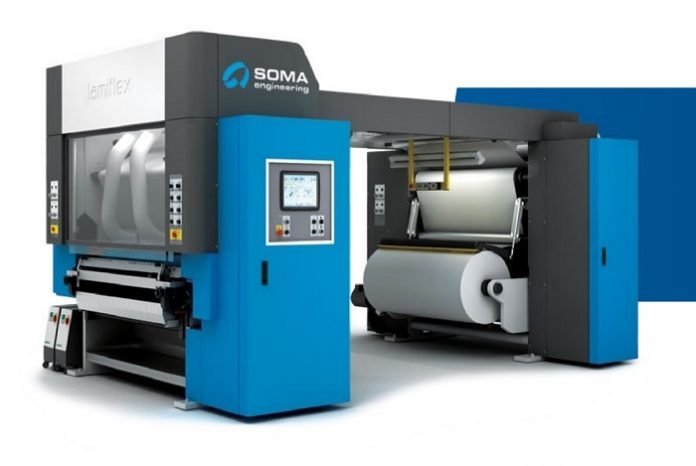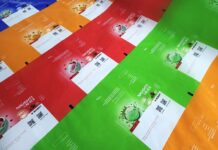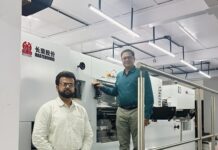
A retort pouch is a heat resistant bag made up of an outer layer of laminated films or foils and filled with a food or liquid that is heat-sealed and sterilized by pressure cooking in an
autoclave (retort chamber) to produce a product safe from microorganisms. While the outer layer of film is for printing, strength and protection the inner layer of foil and heat-sealant material such as a food-contact safe polypropylene or a coating is meant to provide a liquid or oxygen barrier, product visibility and microwave-ability.
Typically the outer layer of the retort pouch is printed on a gravure press for its high quality graphics using gravure cylinders that are time-consuming and expensive to produce, adding to the final cost of the product. However, retort pouches are increasingly being printed using flexography that is becoming comparable in quality to gravure through the development of better prepress and digitally imaged plate technology. In addition, press engineering designs with improved automation and stability have taken the variables out of the flexo process enabling stunning graphics to be easily and consistently achieved.
With input from various brand owners, Soma recently undertook to produce a retort pouch for subsequent microwave cooking printed on its Optima flexo printing press. The project was to convert a typical gravure job to flexo and demonstrate the advantages of the process in terms of print quality, productivity for short-runs and deliver a final, filled pouch to the brand owners for evaluation. The image resolution required to be comparable and judged as being equivalent at the same viewing distance with gravure printing was set at 60 lines per centimetre (150 lines per inch). Reducing the number of colors to CYMK had the effect of maintaining costs as well as achieving high shelf-impact.
Production using APEX GTT anilox rollers, design and reproduction with Reproflex, Dupont Cyrel DPR, and Flint Variolam AB inks were all aimed at reducing downtime during design changes with the objective of short quality runs for profit. The microwave application required a multilayer construction utilizing an outer layer of reverse printable and barrier coated 0.012 mm PET, Camclear supplied by Camvac UK, adhesive solvent free Pureflex from Polyflex UK, an inner layer of abrasion resistant Nylon 0.015 mm, provided by Sojitz Germany and a final inner layer of white 0.075 mm CPP, supplied by Coveris Austria.
The materials were processed on a Soma Lamiflex laminator using solvent free adhesives. The speed of the first lamination pass with PET + OPA was 200 metres a minute and the speed of the second lamination pass with duplex + CPP was 150 metres a minute. The final result gave no lamination issues and no degradation to the printed image. The speed of conversion was 12 pouches a minute involving folding, thermal sealing of closure, filling with 100 gm of oatmeal to simulate rice content and final thermal edge sealing.










